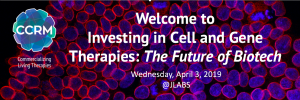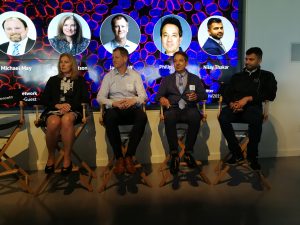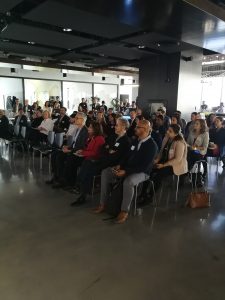Matthew Mistry is a Market and Equity Analyst at CCRM, where he conducts investment diligence, market analyses, participates in company creation activities and supports strategic business development. He joined CCRM from the Ontario Bioscience Innovation Organization (OBIO) where he was involved in supporting health science companies gain access to private and public capital, providing strategic business advice, investor readiness coaching, and pitch review and evaluation of high potential health science technologies in the province of Ontario. He has also worked at the Hospital for Sick Children where he was involved with the patenting of a cancer diagnostic biomarker. Matthew also worked for GeneYouIn, a digital health/health IT company offering personalized genetic testing and disease-risk assessments for clients. He received his Master’s of Science from the University of Toronto studying the genetic etiology of childhood brain cancer and before that obtained a BSc (Honours Biology) from McMaster University.
 “Cell and gene therapies are a much more feasible technology today than ever before,” said Nilay Thakar, an Associate from ARCH Venture Partners, at CCRM’s first ever Investing in Cell and Gene Therapies investor day. The regenerative medicine field has been undergoing a transformation of sorts, driven largely by: improved manufacturing capabilities; technological breakthroughs allowing for improved genetic engineering and better-defined mechanisms of action in cell and gene therapies; and, significant capital being deployed into these engineered therapies, driving interest away from conventional stem cell therapies that rely on the basic biology of cells.
“Cell and gene therapies are a much more feasible technology today than ever before,” said Nilay Thakar, an Associate from ARCH Venture Partners, at CCRM’s first ever Investing in Cell and Gene Therapies investor day. The regenerative medicine field has been undergoing a transformation of sorts, driven largely by: improved manufacturing capabilities; technological breakthroughs allowing for improved genetic engineering and better-defined mechanisms of action in cell and gene therapies; and, significant capital being deployed into these engineered therapies, driving interest away from conventional stem cell therapies that rely on the basic biology of cells.
Last month (April 3rd) CCRM, in partnership with JLABS Toronto and TOHealth!, brought together more than 135 local and international investors, entrepreneurs, academics and ecosystem partners to put a spotlight on these milestones and share insights from leading investors and entrepreneurs in cell and gene therapy. The full day event included a panel of four biotech investors, moderated by CCRM’s President and CEO Michael May, and five scientific and industry talks from academic and company founders.
Part 1: Manufacturing feasibility, enabling technologies and significant cash flow have been critical developments for the maturation of the cell and gene therapy industry

The panelists, minus moderator Michael May of CCRM.
The day kicked off with an investor panel including Nancy Harrison, CDL Fellow and Co-founder of MSI Methylation Sciences, Philip Tagari, Vice-President of Research, Therapeutic Discovery Amgen Inc., Nilay Thakar, Associate at ARCH Venture Partners and Jamie Stiff, Managing Director at Toronto-based Genesys Capital. The panel shared insights relevant for many entrepreneurs in the audience, which included being brave and courageous when beginning their next venture and to make sure they understand not everything will be perfect. The panel agreed that founders need to understand their investor audience when raising capital, both in terms of what the venture capitalist (VC) does, but also who within the firm they should approach.
They also highlighted intellectual honesty as a crucial skill, especially for first-time entrepreneurs. Investors want to learn about the merits of a program, but also need to understand the challenges. Investors see hundreds of pitches a year so being honest with what you do know and what you don’t stands out as genuine, novel, and grounded. Make sure you discuss and acknowledge your competition – another common mistake made by first-time entrepreneurs. By openly and honestly identifying the risks, entrepreneurs can instill confidence that they have a plan to tackle risks and, if necessary, determine if an investor needs to provide resources for mitigation. If one builds a diverse team, strong in science and business, then that team can better assess all risks from all relevant angles.
There’s lots of early biology for therapies based on single targets, but when diseases are caused by multiple targets, many therapies on the market aren’t efficacious. Subsequently, patients suffer and so does the reputation of our industry, and enormous amounts of time and capital are lost. Recently, there has been a rise in the search for bispecific molecules, which Amgen is particularly excited about. If cells are the ultimate multifunctional therapeutic, as Amgen believes, then there is more research and development still to do in this space. Since they manufacture more cells than anyone in the world, they are all too familiar with the challenges of that process.
Amgen encourages founders to look at their data and identify where it doesn’t make sense, related to process or otherwise. This is something to be prepared for when approaching them for partnership or investment opportunities. Finally, there is a burden to prove reproducibility of data outside of an academic lab. Find a reputable partner who can do this at a price that won’t jeopardize the financial health of your venture.
Cell and gene therapy companies (and the industry in general) have benefited immensely from large amounts of capital deployed by investors. This has enabled improved manufacturing capabilities for these complex therapies, which has been a stumbling block for years. Tools to help improve manufacturing are of renewed interest to investors since the infrastructure now exists to scale manufacturing needed for clinical trials. Unfortunately, these therapies remain exceedingly costly for patients. Thus, it’s worth remembering that the “endpoint” is not regulatory approval for a therapy. The endpoint is access of good products for patients.
Part 2: Scientific advancements in the field of Cell and Gene Therapy
Following the investor panel, Dr. Luk Vandenberghe, of the Grousbeck Gene Therapy Center at Harvard Medical School, described how adeno-associated virus (AAV) structure and function are tightly linked and that capsid engineering can be used to improve stability, retargeting and increase gene size carried by vectors. His group specializes in in vivo gene transfer to the cochlea to improve hearing loss using a quantitative multiplex functional screen.
Next Dr. Shana Kelley, Professor at the University of Toronto, made the case that cell-based therapies need tools for quantitative quality control. She went on to describe her group’s approach, called Magnetic Ranking Cytometry, that separates out heterogenous mixtures of human pluripotent stem cell (hPSC)-derived cardiomyocytes to produce more efficacious cell therapies and disease models. The tool is a practical solution for therapeutic stem cell manufacturing quality control and is applicable to other engineered cell types (i.e. CAR-T).
Dr. Ulrik Nielsen, Executive Chairmen of Notch Therapeutics, described the company’s technology that enables the manufacturing of gene-edited T cells from PSCs. The Notch technology opens the door to making uniform T cell therapeutics on a large scale, such as CAR-T, TCR, CTL, Tregs, etc.
Dr. Sheila Singh, CEO of Empirica Therapeutics, made a persuasive pitch that her company will be leading the engineering of the next generation of immuno-therapeutics for glioblastoma, the most aggressive and fatal brain cancer. In particular, the company plans to harness CAR-T cells, bispecific T-cell engaging antibodies and tumor-specific monoclonal antibodies to target treatment-resistant cancer sub-clones.
Dr. Gong Chen of NeuExcell Therapeutics finished off the series of scientific talks arguing for his company’s gene therapy (AAV-based) technology that converts reactive astrocytes, a type of brain cell, into neurons to replenish dead neurons in injured or diseased brains.
Part 3: State of Public Regenerative Medicine Companies
Leading into the networking event, the program ended with our keynote speaker, Reni Benjamin, Managing Director and Senior Biotechnology Analyst at Raymond James Financial. Dr. Benjamin gave a state of the union for the regenerative medicine field, acknowledging it is “hot,” but that not all companies are created equal. He noted that shrinking R&D expenditures, significant cash on hand in big pharma companies, and tax reforms could boost merger and acquisition activities this year. He presented compelling data showing the public markets are mirroring the capital being deployed into private ventures, as different indices are showing that public investment confidence is high in engineered cell and gene therapy companies, but remain low in stem cell companies. This speaks to the increased sophistication of investors to cell and gene therapies in general. He concluded by encouraging entrepreneurs to access capital when they can – not when they need to. Most importantly, start talking to investors and analysts early because the fundraising cycle has the potential to be long and arduous.

We haven’t set a date for the next investor event, but judging by the popularity of this one, it’s likely there will be a second. If you don’t already, sign up to receive CCRM’s newsletter so you’ll learn about future events like this and others.
Guest
Latest posts by Guest (see all)
- Regenerative immunotherapy: Hope for chronic autoimmune diseases - September 16, 2025
- Canada’s regenerative revolution: Why AI is the catalyst - September 4, 2025
- Summer by Design: A launchpad for future entrepreneurs and industry scientists - August 14, 2025






Comments